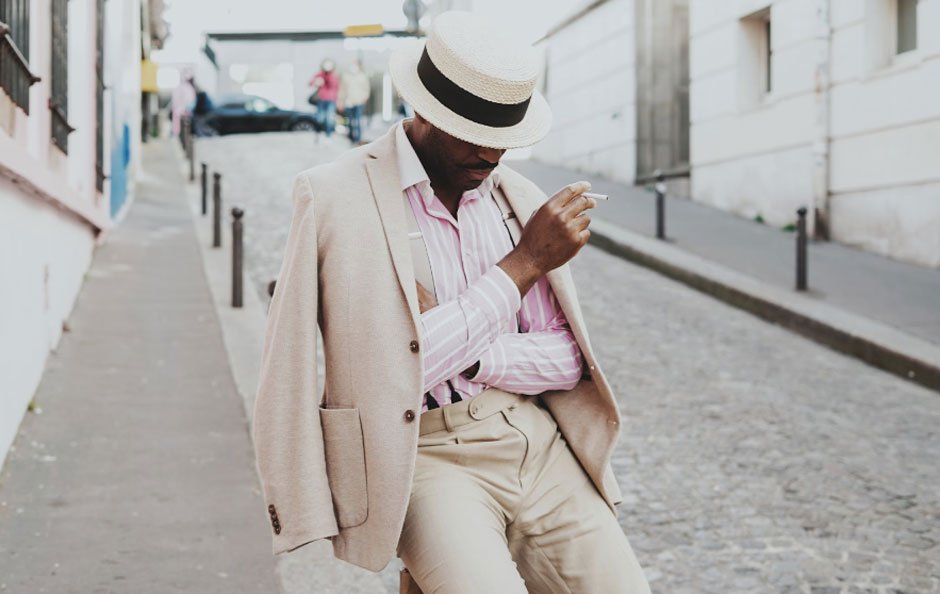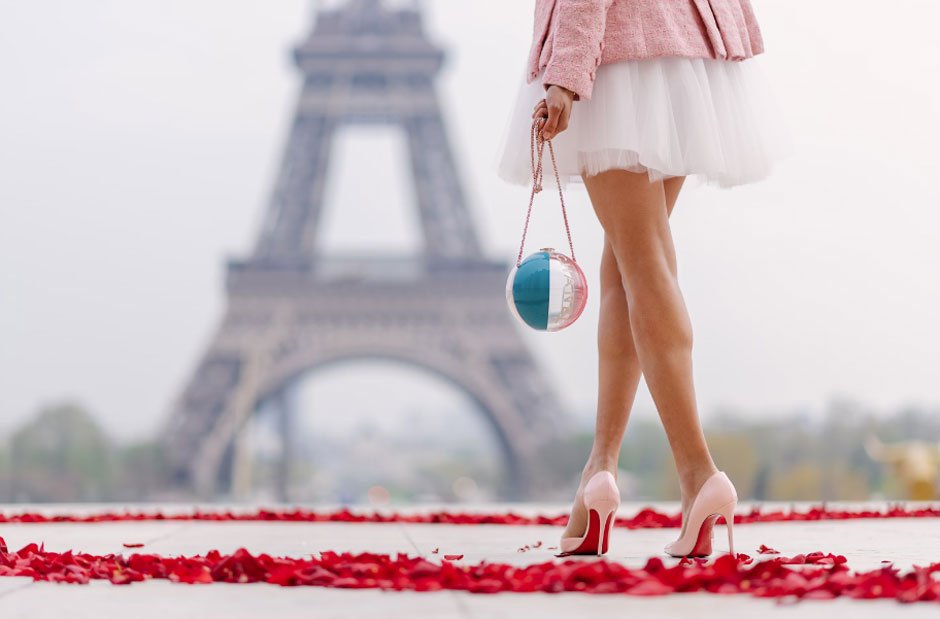The magnetic allure of fashion capitals stretches far beyond their geographical boundaries, influencing not just what we wear but how we perceive style and culture. These cities, each with its unique narrative, are the epicentres where creativity meets tradition, and where the future of fashion is shaped. They reflect the zeitgeist of our times, mirroring societal shifts and trends. As we embark on this exploration, we delve into the essence of these fashion capitals, uncovering the intricate weave of history, culture, and innovation that positions them at the forefront of the global fashion scene.
The journey through these cities is not just about tracing the evolution of style; it’s about understanding the dynamics that make each capital a beacon of fashion. From the legacy of iconic designers to groundbreaking fashion events, these cities offer a glimpse into the transformative power of fashion. It’s a narrative that extends beyond the runway, influencing every facet of our lives, shaping our identities, and the way we express ourselves. Let’s dive into the heart of these fashion capitals and discover the secrets behind their enduring allure.
Paris: The Quintessence of Haute Couture
Paris, often hailed as the cradle of haute couture, is where fashion transcends clothing to become art. The city’s streets, echoing with the footsteps of Coco Chanel and Christian Dior, are testament to a legacy that continues to inspire. It’s a place where the past and present merge seamlessly, creating a vibrant tapestry of style that influences fashion enthusiasts worldwide. According to Conde Nast Traveller, Paris’s timeless influence on fashion is undeniable, with its rich history and vibrant culture continuously inspiring fashion enthusiasts and designers alike.
The city’s fashion scene is a dynamic blend of tradition and innovation. Landmark events like Paris Fashion Week serve as global platforms, unveiling the latest trends and collections to the world. This event is not just a showcase but a celebration of Paris’s enduring influence on the fashion industry. It’s a city that nurtures creativity, providing a fertile ground for emerging talent to flourish, ensuring that Paris remains at the forefront of the global fashion scene for years to come.
Milan: A Symphony of Tradition and Modernity
Milan stands as a testament to the enduring appeal of Italian craftsmanship, where meticulous attention to detail and relentless pursuit of excellence have cemented its status as a fashion powerhouse. The city’s fashion landscape is a fascinating mix of tradition and innovation. Iconic fashion houses like Prada and Versace, deeply rooted in Milan’s rich cultural soil, coexist with emerging designers who bring fresh perspectives to the table. The Business of Fashion notes Milan’s evolving role in the industry, highlighting its ability to adapt and thrive amidst changing trends and consumer demands.
Milan Fashion Week, a highlight on the global fashion calendar, showcases the city’s prowess in blending traditional craftsmanship with cutting-edge design. It’s an event that attracts industry professionals, media, and style aficionados from around the world, proving that Milan is a city where tradition and modernity coexist in perfect harmony. This blend of heritage and innovation is what keeps Milan at the epicentre of global fashion trends.
London: The Vanguard of Fashion Innovation
London’s fashion scene is a melting pot of innovation and diversity. Known for fostering emerging talent, the city has a long-standing reputation for creative experimentation. London’s eclectic street style, influenced by its rich cultural tapestry, often precedes global fashion trends. It’s a place where the unconventional becomes the norm, and fashion rules are meant to be broken. “Bold, vibrant colours are all the rage for 2024. Think saturated reds, oranges, and yellows – colours that pop and make a statement,” says Patrick Kenger, highlighting the city’s penchant for bold experimentation.
The influence of designers like Vivienne Westwood and Alexander McQueen, who challenged conventional fashion norms, continues to inspire a new generation. London’s approach to fashion is also increasingly focused on sustainability, with local initiatives promoting ethical practices and responsible consumption. London Fashion Week is not just a showcase of the latest collections but a platform for discussing critical issues facing the industry, reflecting London’s commitment to driving positive change in fashion.

New York: Crafting the American Fashion Identity
New York City, with its vibrant energy and diverse culture, has played a pivotal role in defining the American fashion identity. This city is a melting pot of styles, where high fashion meets streetwear, creating a unique and dynamic fashion landscape. New York’s fashion scene reflects its inhabitants’ diverse backgrounds, resulting in a rich tapestry of influences that shape global fashion trends. New York Fashion Week, a seminal event, draws designers, models, and fashion enthusiasts from across the globe, setting the tone for the season’s trends.
The city’s contribution to fashion extends beyond the runway. New York’s vibrant street style, characterised by its boldness and individuality, has become a source of inspiration for designers worldwide. It’s a city where fashion is not just about what you wear but how you wear it, encouraging a spirit of experimentation and self-expression. “A shift toward quiet or silent luxury – high-quality clothes with minimal or no visible branding – is another trend I’m looking forward to this year,” Deseri Kelley notes, reflecting New York’s evolving fashion landscape.
Tokyo: The Epicentre of Avant-Garde Style
Tokyo stands at the forefront of avant-garde fashion, challenging conventional norms and pushing the boundaries of creativity. This city’s fashion scene is a kaleidoscope of styles, from the minimalist to the extravagant, reflecting its inhabitants’ diverse tastes and attitudes towards fashion. Tokyo’s designers are known for their innovative use of materials, textures, and silhouettes, creating collections that are both cutting-edge and deeply rooted in Japanese culture.
The influence of Tokyo on global streetwear is undeniable. Brands like Comme des Garçons and BAPE have gained international acclaim, blending traditional Japanese aesthetics with contemporary design elements. This fusion of styles has captivated fashion enthusiasts worldwide, establishing Tokyo as a key player in the global fashion industry. Tokyo’s commitment to sustainability is also gaining momentum, with designers and brands exploring eco-friendly practices and materials, reflecting a broader trend towards sustainability in fashion.
Seoul: Pioneering a New Wave of Fashion Influence
Seoul has emerged as a powerhouse of fashion innovation, captivating the global fashion scene with its unique blend of traditional and modern styles. The city’s fashion landscape is vibrant and dynamic, reflecting South Korea’s rich cultural heritage and its rapid modernisation. Seoul’s designers are at the forefront of this transformation, creating collections that are both culturally significant and globally relevant.
The influence of K-fashion is growing, with Seoul Fashion Week becoming a must-attend event for industry insiders and fashion enthusiasts alike. This event showcases the creativity and diversity of Seoul’s fashion scene, highlighting the city’s role in driving global fashion trends. The fusion of traditional Korean elements with contemporary design has resulted in a distinctive style that is both innovative and accessible. Seoul’s fashion scene is also characterised by its focus on sustainability and innovation, reflecting a broader shift towards responsible fashion.
Bridging Global Trends with Cosette
In the realm of fashion, the quest for luxury often comes with a desire for exclusivity and sustainability. Cosette stands at this intersection, offering a curated selection of luxury handbags and accessories from leading brands at discounted prices. This approach not only makes luxury fashion more attainable but also promotes sustainability by selling excess inventory from luxury brands. Cosette’s mission aligns with the growing trend towards sustainable fashion, offering customers a way to indulge in luxury while being conscious of their environmental impact.
Shopping with Cosette is not just about acquiring luxury items; it’s about embracing a lifestyle that values quality, sustainability, and accessibility. Whether online or in-store, customers can enjoy a premium shopping experience, knowing that they are making a positive impact on the environment. Cosette’s commitment to making luxury more affordable and sustainable is a testament to the evolving nature of the fashion industry, where luxury and responsibility can coexist harmoniously.
The Future of Fashion Capitals
As we look to the future, the landscape of fashion capitals is poised for change. The rise of digital technology and the growing emphasis on sustainability are reshaping the industry, creating new opportunities for cities to emerge as leaders in fashion innovation. Emerging markets in Asia, Africa, and Latin America are gaining prominence, challenging the traditional dominance of Western fashion capitals.
The shift towards digital fashion shows and online retail is democratising access to fashion, allowing designers from around the world to showcase their work on a global stage. This trend is likely to continue, with technology playing an increasingly important role in how fashion is designed, produced, and consumed. Sustainability is also a key driver of change, with consumers demanding more ethical and environmentally friendly practices from the fashion industry. “Thanks to high-profile concert tour looks from stars like Taylor Swift and Beyoncé, metallics enjoyed a surge in popularity in 2023 that I expect will continue,” Alex Rivera comments, highlighting the influence of pop culture on fashion trends.
As we navigate this evolving landscape, it’s clear that the future of fashion capitals will be shaped by their ability to adapt to these changes. Cities that embrace innovation, sustainability, and inclusivity are likely to emerge as the new leaders in global fashion. The industry is at a crossroads, and the decisions made today will determine the direction of fashion for years to come.
Reflecting on the Global Fashion Narrative
The exploration of the world’s fashion capitals reveals a rich and diverse narrative, woven from the threads of history, culture, and innovation. These cities, each with its unique identity and contribution to the fashion industry, collectively shape the global fashion landscape. As we reflect on their influence, it’s clear that fashion is more than just clothing; it’s a form of expression, a reflection of societal values, and a force for change.
The interconnectedness of fashion capitals underscores the importance of appreciating diverse cultural contributions to fashion. It’s a reminder that fashion is a global language, spoken in myriad dialects, each adding depth and richness to the conversation. As the industry continues to evolve, the role of sustainability in shaping its future cannot be overstated. It’s a movement that transcends borders, uniting us in our shared responsibility to create a more ethical and sustainable fashion industry.
In conclusion, the tapestry of global fashion is ever-evolving, with each thread representing a story, a vision, and a hope for the future. As we look ahead, let’s embrace the diversity and creativity that define the world’s fashion capitals, while committing to a more sustainable and inclusive industry. The future of fashion is bright, and it’s up to us to shape it.

